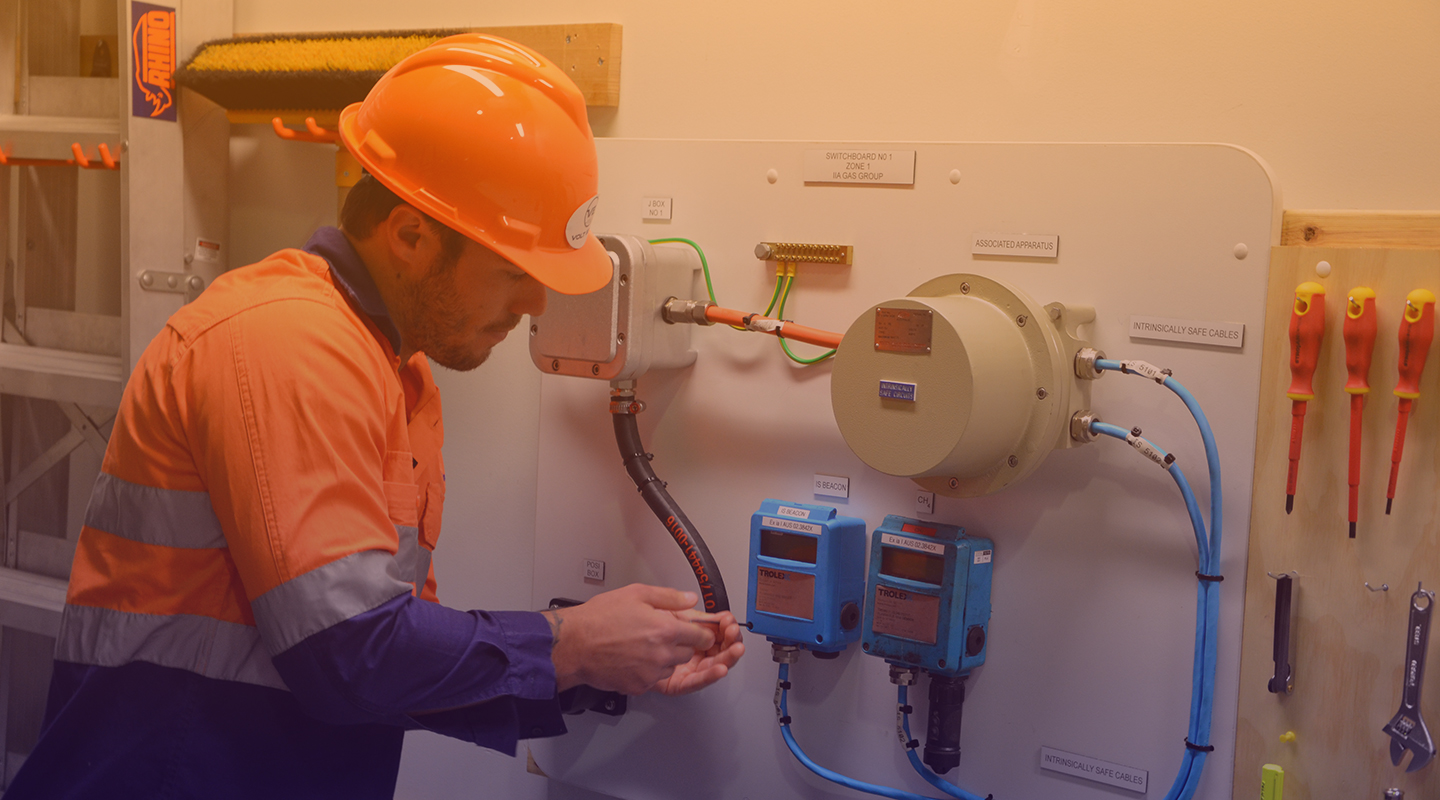The Only Guide for Roar Solutions
The Only Guide for Roar Solutions
Blog Article
The Of Roar Solutions
Table of ContentsThe smart Trick of Roar Solutions That Nobody is Discussing3 Simple Techniques For Roar SolutionsWhat Does Roar Solutions Mean?
In order to shield installments from a prospective explosion a technique of analysing and classifying a potentially hazardous location is needed. The function of this is to guarantee the correct choice and setup of tools to eventually prevent a surge and to guarantee security of life.
(https://au.enrollbusiness.com/BusinessProfile/7095102/ROAR%20Solutions)
No tools should be installed where the surface temperature of the devices is higher than the ignition temperature level of the offered threat. Below are some common dirt harmful and their minimum ignition temperature. Coal Dirt 380C 225C Polythene 420C (thaws) Methyl Cellulose 420C 320C Starch 460C 435C Flour 490C 340C Sugar 490C 460C Grain Dirt 510C 300C Phenolic Material 530C > 450C Aluminium 590C > 450C PVC 700C > 450C Residue 810C 570C The probability of the hazard existing in a concentration high sufficient to trigger an ignition will differ from location to place.
In order to identify this threat a setup is separated into areas of risk depending upon the amount of time the hazardous is existing. These locations are referred to as Zones. For gases and vapours and dusts and fibers there are 3 areas. Area 0 Area 20 A harmful ambience is very likely to be present and might be existing for extended periods of time (> 1000 hours per year) or perhaps constantly Zone 1 Zone 21 A hazardous ambience is feasible however unlikely to be existing for extended periods of time (> 10 450 C [842 F] A category of T6 indicates the minimal ignition temperature is > 85 C [185 F] Unsafe location electrical equipment possibly developed for usage in higher ambient temperature levels. This would suggested on the rating plate e.g. EExe II C T3 Ta + 60C( This indicates at 60C ambient T3 will not be exceeded) T1 T1, T2, T3, T4, T5, T6 T2 T2, T3, T4, T5, T6 T3 T3, T4, T5, T6 T4 T4, T5, T6 T5 T5, T6 T6 T6 A T Course rating of T1 indicates the optimum surface temperature produced by the tool at 40 C is 450 C. Thinking the connected T Class and Temperature score for the equipment are ideal for the area, you can always make use of an instrument with an extra rigorous Department score than needed for the area. There isn't a clear response to this inquiry. It truly does rely on the kind of tools and what repair services need to be accomplished. Devices with specific examination procedures that can't be performed in the field in order to achieve/maintain 3rd party score. Must return to the factory if it is before the devices's service. Area Repair By Authorised Personnel: Difficult testing might not be needed nonetheless particular treatments might need to be complied with in order for the devices to keep its third party score. Authorized personnel should be utilized to do the job correctly Repair have to be a like for like substitute. New component should be taken into consideration as a straight replacement requiring no special testing of the devices after the fixing is full. Each item of devices with an unsafe rating should be evaluated separately. These are detailed at a high degree below, however for more comprehensive information, please refer directly to the guidelines.
Indicators on Roar Solutions You Need To Know
The equipment register is a comprehensive data source of equipment records that includes a minimum collection of areas to identify each thing's place, technical parameters, Ex-spouse category, age, and environmental data. This info is important for tracking and taking care of the devices properly within harmful areas. On the other hand, for periodic or RBI tasting assessments, the grade will be a combination of Thorough and Close evaluations. The proportion of Comprehensive to Shut assessments will be identified by the Tools Danger, which is assessed based upon ignition threat (the possibility of a resource of ignition versus the possibility of a combustible atmosphere )and the harmful location classification
( Area 0, 1, or 2). This variation will certainly likewise affect the resourcing needs for work prep work. When Lots are defined, you can create sampling plans based upon the example dimension of each Lot, which describes the variety of arbitrary equipment things to be inspected. To figure out the needed sample size, two facets require to be evaluated: the size of the Lot and the classification of examination, which indicates the level of effort that must be used( minimized, regular, or raised )to the inspection of the Lot. By integrating the group of inspection with the Lot size, you can after that develop the proper denial requirements for an example, suggesting the allowed number of defective items located within that sample. For more details on this procedure, please describe the Energy Institute Standards. The IEC 60079 standard recommends that the maximum period in between inspections should not go beyond 3 years. EEHA assessments will certainly likewise be conducted beyond RBI projects as part of scheduled maintenance and equipment overhauls or repair work. These inspections can be credited towards the RBI example dimensions within the influenced Great deals. EEHA inspections are performed to determine faults in electric devices. A weighted racking up system is necessary, as a solitary piece of equipment might have several faults, each with varying degrees of ignition danger. If the mixed score of both inspections is less than two times the mistake score, the Whole lot is considered acceptable. If the Whole lot is still thought about undesirable, it has to go through a complete inspection or reason, which may cause stricter inspection methods. Accepted Lot: The reasons of any kind of faults are recognized. If a typical failure mode is discovered, extra tools may need assessment and repair work. Mistakes are classified by intensity( Safety, Stability, Home cleaning ), making sure that urgent problems are assessed and addressed immediately to mitigate any type of influence on safety or procedures. The EEHA data source should track and record the lifecycle of faults together with the restorative actions taken. Carrying out a robust Risk-Based Assessment( RBI )method is essential for making sure compliance and safety in taking care of Electrical Equipment in Hazardous Areas( EEHA) (hazardous area electrical course). Automated Mistake Rating and Lifecycle Monitoring: Effortlessly manage faults and track their lifecycle to boost inspection accuracy. The introduction of this assistance for risk-based inspection even more strengthens Inspectivity's placement as a best-in-class service for regulatory compliance, in addition to for any type of asset-centric assessment use case. If you want learning a lot more, we invite you to request a demo and discover exactly how our option can change your EEHA monitoring procedures.
Get This Report about Roar Solutions

In regards to eruptive danger, a harmful location is an atmosphere in which an explosive environment exists (or might be anticipated to be existing) in amounts that call for unique precautions for the construction, setup and use of tools. eeha training. In this write-up we check out the obstacles faced in the office, the danger control procedures, and the required proficiencies to work securely
These compounds can, in specific conditions, form eruptive environments and these can have major and heartbreaking consequences. Most of us are familiar with the fire triangle remove any one of the 3 elements and the fire can not take place, however what does this mean in the context of unsafe locations?
In many instances, we can do little her explanation regarding the degrees of oxygen in the air, however we can have significant impact on sources of ignition, for instance electric equipment. Dangerous areas are documented on the hazardous location category drawing and are recognized on-site by the triangular "EX" indicator. Right here, amongst various other essential info, zones are divided into three kinds depending on the risk, the probability and duration that an eruptive environment will certainly exist; Area 0 or 20 is regarded one of the most unsafe and Area 2 or 22 is deemed the least.
Report this page